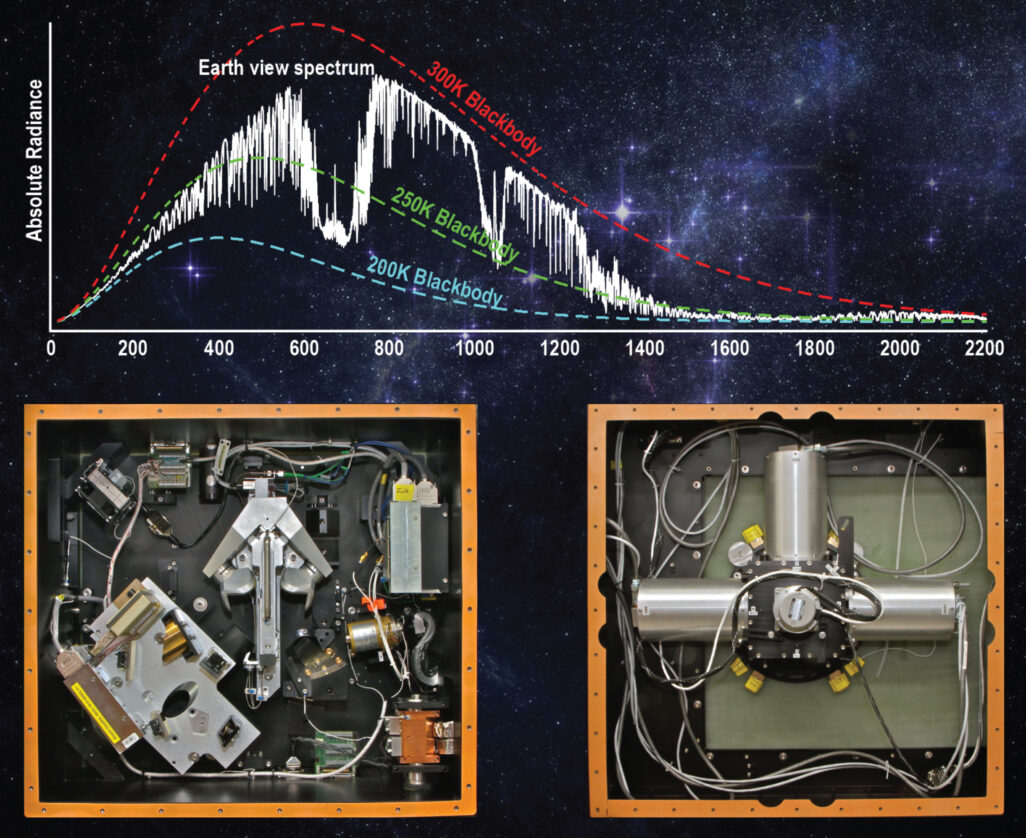Far-infrared
The global observing network of weather satellites – made up of polar orbiting and geostationary satellites – provides a comprehensive daily snapshot of Earth’s atmosphere and weather. Onboard instruments like imagers and infrared sounders capture data needed by scientists to understand weather patterns and climate.
New instrument developments promise to expand that capability by capturing crucial information from the far-infrared region of the electromagnetic spectrum. While the far-infrared region makes up nearly half of Earth’s emission spectrum – and its role in regulating heat transfer in places like the Arctic is accepted – current sensors are not designed to systematically collect data there.
To address this need, scientists and engineers at the University of Wisconsin-Madison Space Science and Engineering Center developed the Absolute Radiance Interferometer (ARI). It offers researchers a way to peer deeper into the inner-workings of the Earth’s energy budget and observe climatological changes through highly accurate measurements in the infrared and far-infrared regions. Additionally, it is able to independently verify the accuracy of the data it receives/collects through an onboard calibration system.

An overview of the ARI’s development and capabilities was published in a special issue of the journal Remote Sensing in June 2020.
“There is a recognized need for this capability,” says Joe Taylor, SSEC scientist. The spectral coverage into the far-infrared and ultra-high accuracy of the ARI are needed to measure long-term changes of Earth’s atmosphere and surface. This is valuable not only for the ARI measurements, but also would provide a reference standard for any of the international satellites that measure in the infrared.”
When a new weather satellite is launched and reaches its final orbit, it must undergo an extensive period of testing to assess the performance of its sensors. Throughout the life of the instrument, its measurements can be compared to measurements from other sensors on the same satellite or others. This is important, since small changes in temperature can have large impacts on the formation of severe weather, for example.
“The ARI would provide a calibration reference standard for other instruments and could be used to help calibrate them to a similar measurement accuracy,” says Taylor.
Development of the ARI began more than a decade ago. It evolved from the Climate Absolute Radiance and Refractivity Observatory (CLARREO) mission, established after NASA’s 2007 Decadal Survey identified the need for improved infrared sounder capabilities and hyperspectral infrared instrument development. The World Meteorological Organization, in its “Vision for a Global Observation System in 2025” further recognized the need for at least six geostationary satellites equipped with advanced infrared sounding capabilities like those provided by the ARI and other hyperspectral sounders.
“It is encouraging to see some agencies in the international community, such as the Chinese Meteorological Agency and the European Organisation for the Exploitation of Meteorological Satellites, moving forward with plans to expand the global fleet of satellites and their capabilities in the infrared spectrum,” says Taylor.
